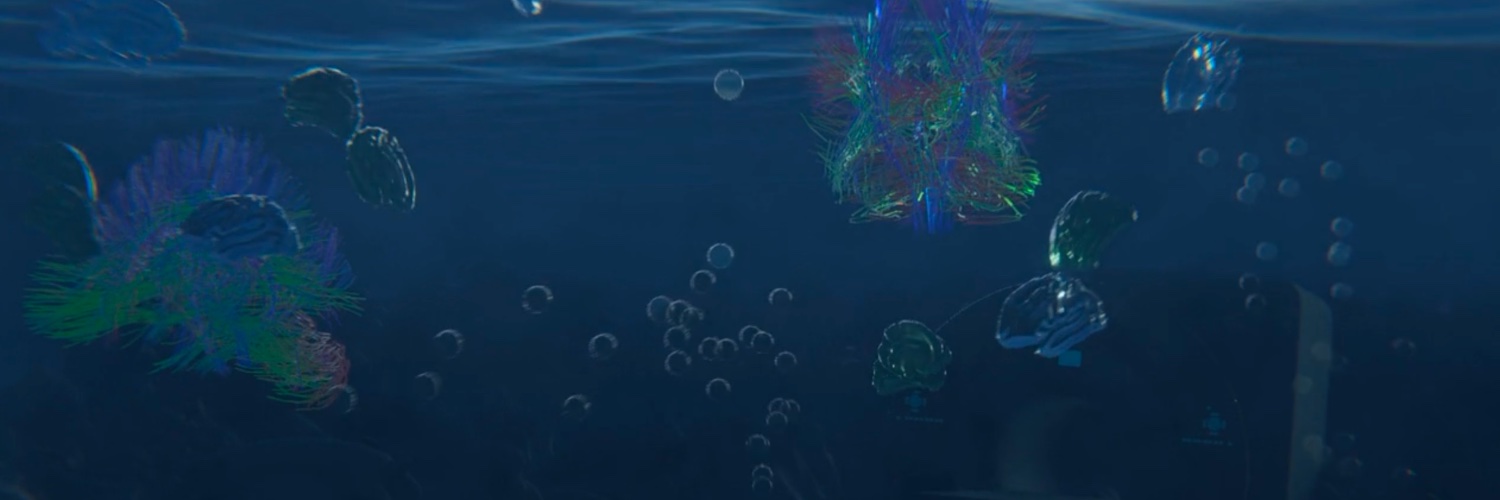
Rob Leech
@leechbrain
I really wanted to like @eLife but everything I've ever sent there, including the paper here, has been triaged by a dumb editor, stuck in the past, missing the point and maintaining the academic aristocracy. Academic publishing is crap genre fiction, not science @mbeisen
Two new preprints about physical space (geometry) and the brain. biorxiv.org/content/10.110… biorxiv.org/content/10.110… /n
Our review/perspective on tracking non-stationarity of an unknown process is now published in Chaos 🦋 Congratulations @kieran_s_owens ! Stay tuned for some follow-up work coming soon 👀 pubs.aip.org/aip/cha/articl…
Latest preprint: "Parameter Inference from a Non-stationary Unknown Process" (PINUP) We're really interested in the problem of inferring sources of non-stationary variation directly from measured time-series data. arxiv.org/abs/2407.08987… Quick summary 👇
Happy to share our Opinion piece @TrendsCognSci "Large-scale interactions in predictive processing: oscillatory versus transient dynamics" with @martin_a_vinck, @uran_cem, Jarrod Dowdall & Brian Rummell. Check our thread below 🧵👇
Using machine learning, this study shows that self-reported experience of task states maps onto 'brain space', i.e., features of different task states identified in fMRI. @the_mindwanders @leechbrain @IanGoodallH @BronteMckeown nature.com/articles/s4427…
We are incredibly excited to announce a new psychedelic research collaboration with King’s College London, investigating neurobiological changes that underly the ‘mystical experience’ using high-resolution 7 Tesla fMRI scanning. We look forward to seeing this research commence!
The good news is that we can optimise task contexts to maximise their sensitivity to specific relationships, reducing the cost of future BWAS. See work by @leechbrain @romy_lorenz to see how this could work sciencedirect.com/science/articl…
So the take home is that BWAS studies that use only 1 situation (often rest) require large sample sizes because any single situation may not be suited to detect brain-trait associations for all trait dimensions. See this nice review by @GrattonCaterina pubmed.ncbi.nlm.nih.gov/39419740/
Importantly we looked at how many people you would need to show the relations in the best tasks for capturing a specific trait. Our estimates suggest hundreds (not thousands) of people would be needed to show the brain-trait relationship seen in the whole sample.
These relations were clear for #gradients 3 (task positive-task negative) and 2 (vision-motor). Tasks with a strong response for one trait were different to those for other traits. This suggests there is likely no -one-size-fits-all situation for all brain-trait associations
We examined if location of any of the tasks in the state-space varied with traits using Linear Mixed Models in R. We found little evidence that traits uniformly impact on brain activity in all tasks. Instead brain-trait association were often stronger in some tasks than others 👇
To this end we took the task data from the Human Connectome Project and examined how brain activity in each situation vary with the Big-5 Personality traits. We built a 3d state-space using the first three #gradients from the work by @margulies and projected task data into it 👇
Remember back in 2022, when we didn't need to worry about a 2nd Trump Presidency, but were concerned about how many participants it would take to map links between personality & brain activity? (cf work by @smarek0502 & @ndosenbach) We have good news 👇 nature.com/articles/s4200…
Join our lab for an exciting PhD position to investigate perceptual awareness using psychophysics, fMRI and decoded neurofeedback. How to Apply: shorturl.at/vDtQH Application Deadline: December 1, 2024 Please retweet! @theASSC
Shining a light on subcortical organization 🧠💡! Using @yetianmed's Melbourne Subcortex Atlas, here’s my latest dive into glass brain visualizations—aiming for practical and insightful anatomical renders! 🎥👇
For those in Chicago for @SfNtweets, welcome! Come check out our poster (Wed 1-5pm; I'm there at 4!). We recorded iEEG during a mental imagery task, with rsfc-MRI networks in the same patients. Come learn about changes in temporal dynamics across different functional networks!
We started this journey together at the @BcBlab, and I’m so glad to see the “cognition morphospace” finally published in @NatureComms, joining the “disconnectome morphospace” in our morphospace family! Congratulations @valepacella 👏